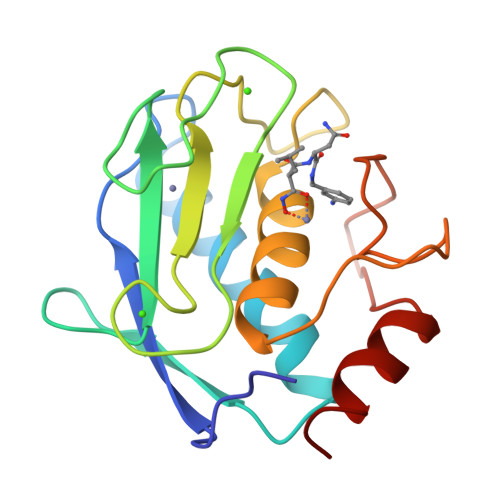Structure of malonic acid-based inhibitors bound to human neutrophil collagenase. A new binding mode explains apparently anomalous data.
Brandstetter, H., Engh, R.A., Von Roedern, E.G., Moroder, L., Huber, R., Bode, W., Grams, F.(1998) Protein Sci 7: 1303-1309
- PubMed: 9655333
- DOI: https://doi.org/10.1002/pro.5560070605
- Primary Citation of Related Structures:
1A85, 1A86 - PubMed Abstract:
Matrix metalloproteinases (MMPs) are a family of zinc endopeptidases, which have been implicated in various disease processes. Various classes of MMP inhibitors, including hydroxamic acids, phosphinic acids, and thiols, have been previously described. Most of these mimic peptides, and most likely bind analogous to the corresponding peptide substrates. Among the hydroxamic acids, malonic acid derivatives have been used as MMP inhibitors, although optimization of their inhibition potency was not successful. Here we report the design of malonic acid-based inhibitors using the X-ray structure of a collagenase/inhibitor complex, which revealed a nonsubstrate-like binding mode. The proposed beta-type turn-like conformation for the improved inhibitors was confirmed by X-ray crystallography. The observation of nonsubstrate-like binding confirms the original strategy for structure-based modeling of improved malonic acid inhibitors, and explains kinetic data that are inconsistent with substrate-like binding. Detailed interactions for the improved inhibitors seen in the crystal structure also suggest possibilities for further modifications in cycles of structure based drug design. Indeed, we have designed nonpeptidic inhibitors with approximately 500-fold improved inhibition based on these structures.
Organizational Affiliation:
Max-Planck-Institut für Biochemie, Abteilung Strukturforschung, Martinsried, Germany.





















